Microsha, Krista, Apogee, Lviv - the first Soviet computers to take away
From the history of the Soviet PC
It is no longer a secret that in 1950–70 the USSR was one of the world leaders in the race called “the development and production of computer equipment”. The first computers - MESM, M-1, later known BESM-6 with a speed of more than 1 million floating-point operations per second, compact computers of the MIR series, and many other achievements of the great minds in the "computer" sphere of the Soviet era.
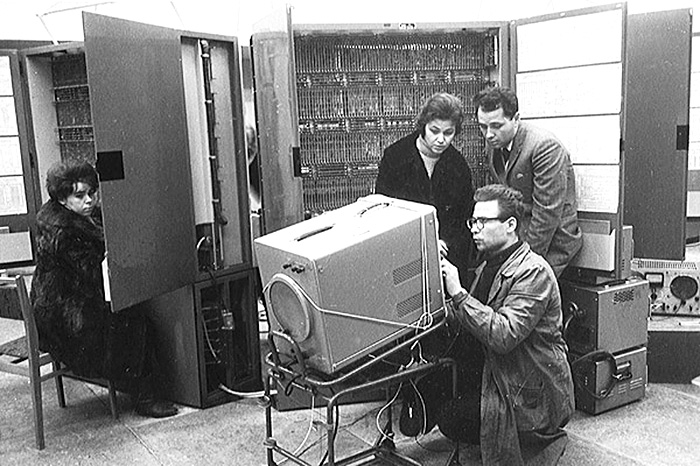
BESM-6
Technologies developed very quickly, and therefore such comments as “I didn’t know / that computers were in the Soviet Union” or “It turns out that Soviet computers were not sludge compared to foreign ones” were caused only by a banal ignorance of the history of development of various “computer” technology and computing devices in the USSR. Many people know the history of the creation of PCs of such world-wide foreign giants as Apple, IBM, etc., since information about them for more than one decade was covered and heard. Historically, it was believed that in the USSR, besides the fact that there was no “sex”, personal computers appeared later by 10 years later than in the same America. Like the first and the second statement - no more than a myth.
The first Soviet integrated circuits with several dozens of transistors, saw the light in the mid-1960s, and by the mid-1970s microprocessors and complex chips were produced, the number of transistors in them was already measured in thousands. In 1974, the first microcomputers based on universal microprocessors were developed. Sectional processors of the K532 and K536 series (which appeared in the same year) made it possible to manufacture machines with a capacity of up to 16–32 bits. So there were 16-bit micro-computers. In 1977, the analog Intel 8080 was released - an 8-bit K580IK80 processor. He then became the basis for the creation of a number of PC models and micro-computers. Two years later, the world's first 16-bit single-chip micro-computer, the K1801E1, was developed. Based on the K1801BE1 in 1981, the K1801BM (a single-chip 16-bit microprocessor) was created,
From the speech of the USSR Deputy Minister of Radio Industry:
Guys, stop doing nonsense. Personal computer can not be. There may be a personal car, personal pension, personal cottage. Do you even know what a computer is? A computer is 100 square meters, 25 service personnel and 30 liters of alcohol per month!
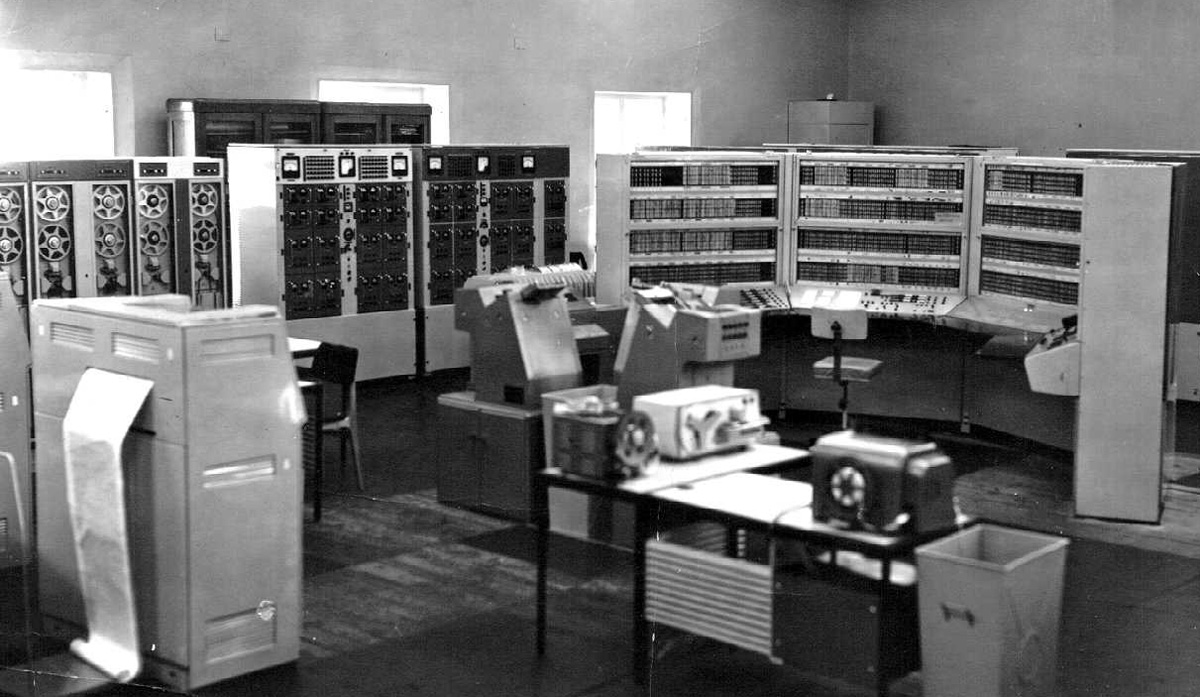
The span of the BESM-6
The span of the size of the first computers was “huge”: tons of equipment, whole machine rooms, personnel serving such a miracle of technology. And because the idea that you can use a computer at home - it seemed just ridiculous, who could afford to place such a unit in the 4 walls of the apartment. And the very concept of a small-sized computer for personal use at that time was unusual. But she was. The end of the 70s was marked by mass production and production of PCs: Iskra-1256, Iskra-226, Iskra-555, VEF-Micro, Micro-80, Electronics NTs-8010, Electronics BK-0010, Microsha, Krista, Apogey BK-01, Partner 01.01, Spectrum-001, etc.
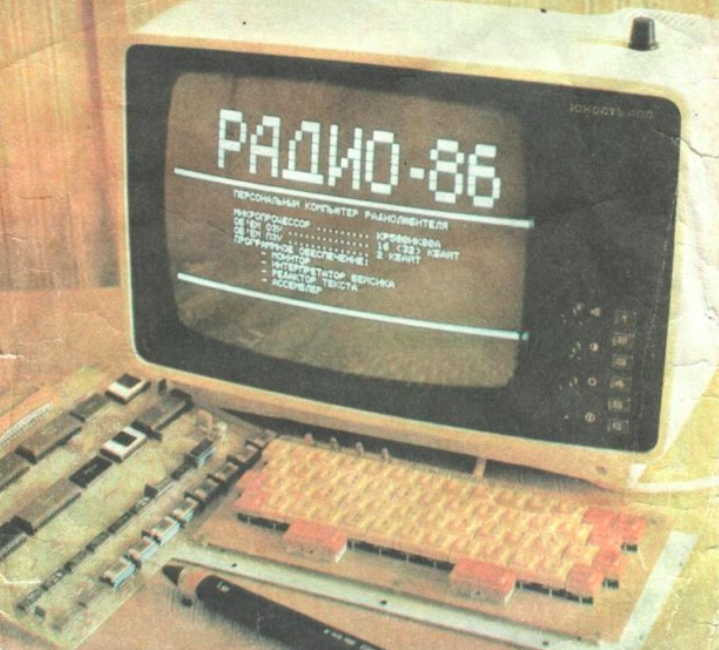
Radio 86RK
In addition, Soviet citizens had an overwhelming desire, a blue dream, so to speak, to have a PC to go, one that could be kept at home. In one of the newspapers, it seems Trud, in 1987 a note was published about how the chief of the automated control system of the cement plant in Primorsky stole (that is, he took) the parts from the factory for assembling computers. He brought out not a lot, and there were 6,000 rubles worth of parts, while for that kind of money you could buy an apartment. Comrade V. Molyarenko had to get two years of correctional labor for his “hobby”.
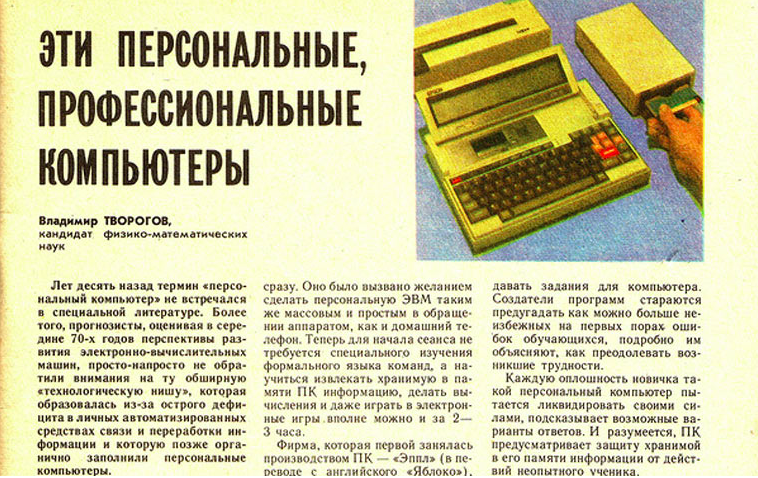
An extensive technological niche, formed due to an acute shortage of personal automated communications and information processing, is what the PC was intended to fill.
For many radio amateurs, the publication in the years 1982-1985 in the magazine "Radio" articles about the "Micro-80" has become the most important source of information about the device and the capabilities of personal computers.
Some Soviet publications told how to assemble a PC with their own hands, others told how necessary this unit was for Soviet citizens. For example, the magazine “These professional personal computers” described in detail how modern computers are arranged and what a bright, but also fascinating future they carry: they help to learn English, give the opportunity to play backgammon, create knitting patterns, work with documents. In well-known magazines with a million copies, entire sections devoted to IT topics began to appear, they were usually called “Man and Computer”. What can I say, even in the 6-12 years old public magazine “Murzilka”, an illustration appeared where the teacher introduces students to a computer.
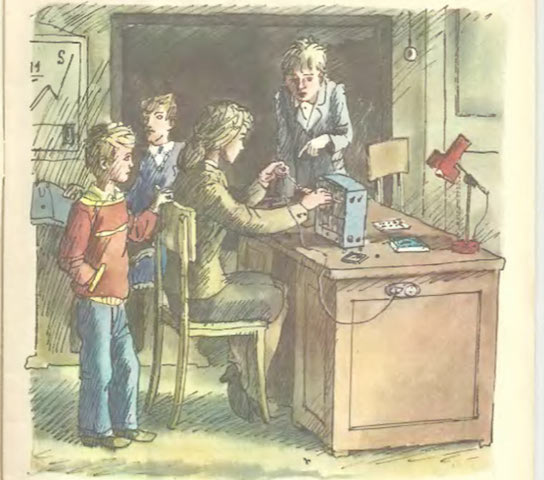
1986 Illustration magazine "Murzilka"
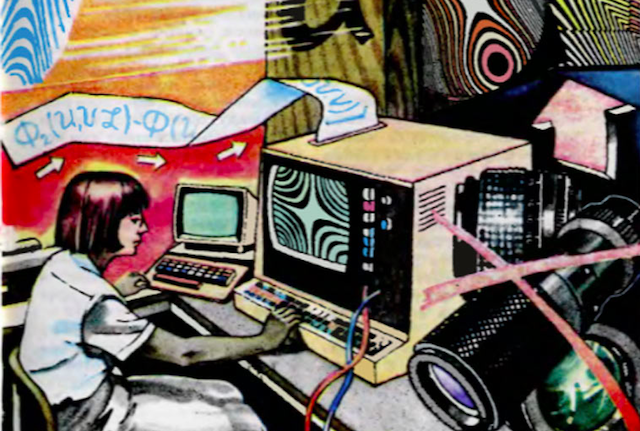
1986 Illustration in the magazine "Young Technician"
Microsha (based on Radio-86RK)
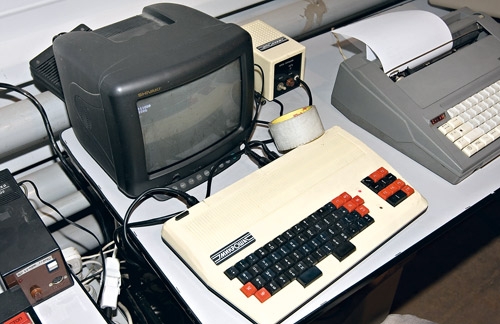
In 1986, the Lianozovo Electromechanical Plant produced the RC-compatible model Mikrosh. This was an improved version of the PK86 prototype, the base RAM was increased to 32 KB, and the KR580VI53 programmable timer appeared. Why Microsha has become one of the most famous models of Soviet PCs, but everything is simply banal - again, marketing, advertising. In 1986, an advertisement about the PC Mikroshe was on the cover of Radio magazine, and a year later, in 1987, the computer was on the cover of the monthly popular science magazine “Science and Life” (No. 7).
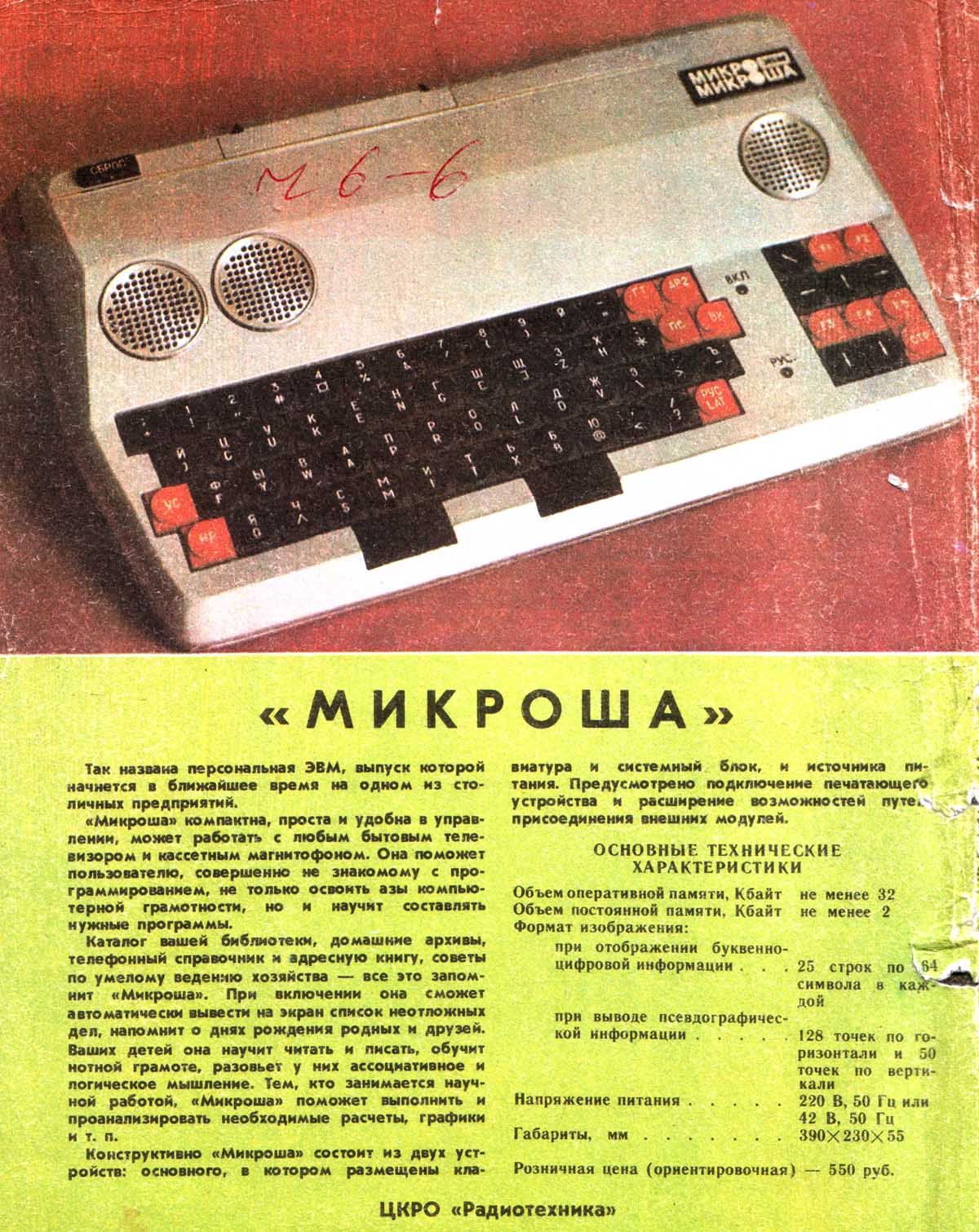
PC Microsha - a reliable, relatively inexpensive machine. The cost of such a device was at that time 500 rubles.
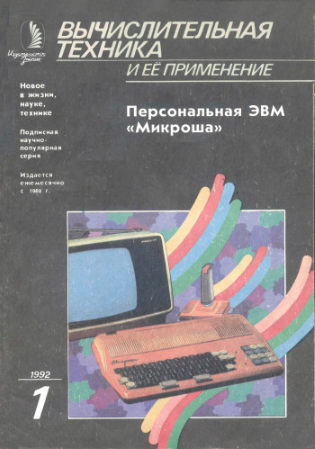
I was incredibly lucky, because I was born in a typical family of a Soviet engineer, who was passionate about the latest technologies. Therefore, the first personal computer under the name “Microsha” appeared in 1986. As I remember, Dad dragged a computer in the morning from a regular business trip, and when I returned from kindergarten in the evening (I was five), Dad showed me a clone of the game Arkanoid (as I understood many years later). Miracle of technology: tsiferki on the screen jump, and you can still manage it interactively with buttons. There was an absolute demolition of the head. You see, 1986 is when children took a TV program and emphasized cartoons at 17:30.
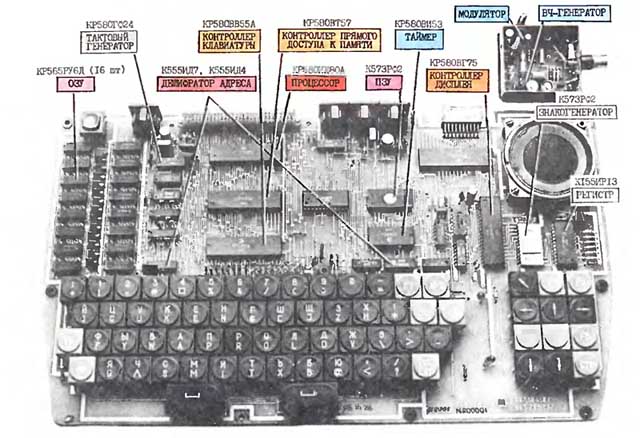
"Science and Life" No. 7 1987 The
weight of the PC Microsha about 3 kg: system unit 1.4 kg, power supply - 1.3 kg, modulator -200 grams. Technical data of the simplest computer intended for general sale:
- Digitality - 8 bits
- The amount of RAM - 32 KB
- Clock frequency - 1.8 MHz
- Power consumption - not more than 20 W
It is necessary to do a single board computer, at least chips, integrated into the case with a keyboard. At this time, the K580 microprocessor set expanded, and i8275 - KR580VG75 was able to reproduce. He became the foundation. Circuitry is mainly implemented by Yuri Ozerov. The monitor was adapted by Dmitry Gorshkov. The question was how to call it - here Viktor Panov says - MICROcomputer, School - I offer “MIKROSHA”.
As was said about the PC in the magazine “Science and Life”, Microsha may not be the best, not the same as we would like to have, but still a real, living computer, opening many interesting possibilities and mostly corresponding to the simplest computer class formed on the world market. An ordinary household tape recorder was used as an external memory device, and a black and white TV was used as a display. Included with the computer was a small block prefix (the size of a pack of cigarettes), a so-called modulator, for connecting to a TV. On the TV screen placed 24 lines of letters or numbers, 64 characters in one line. The addition operation Mikrosh performed for 3 microseconds, and its speed was 200-300 thousand operations per second.
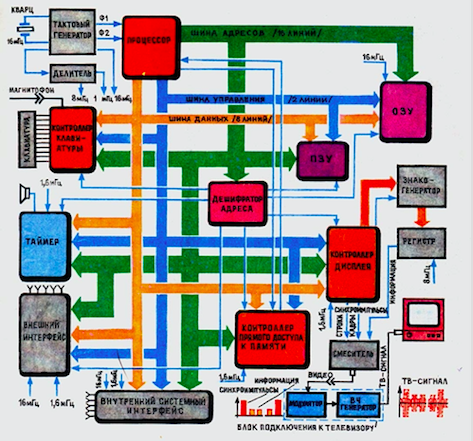
Microchip microprocessor - eight-bit KR580IK80A, address bus - 16-wire. The first portion of the software was supplied on the tape cassette MK-60, on which programs are needed to start working with the PC.
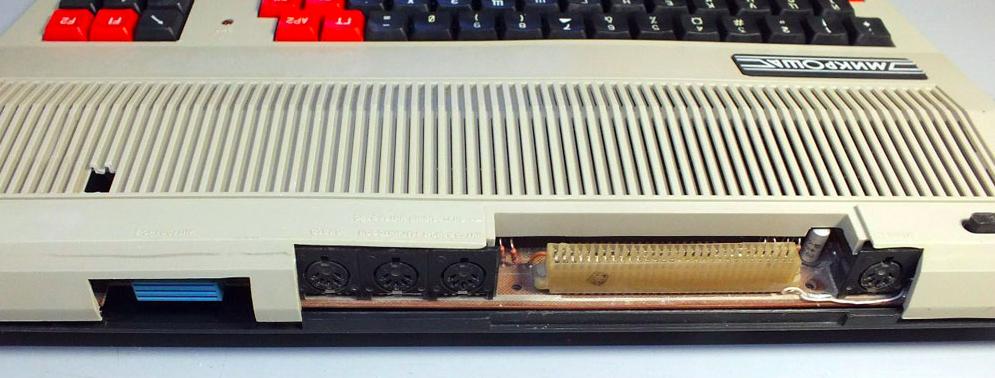
A user who wanted to enter programs written in BASIC, had to start a computer session by reading the machine's interpreter of this language into RAM. Such a need was due to the lack of ROM required capacity.
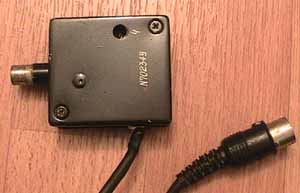
Modulator
Christa - a miracle of technology with a "touchscreen"
Another interesting specimen and representative of the class of the simplest PC was the 8-bit Kris machine. Krista PC began to be produced at the Murom plant of radio measuring devices in 1986. Characteristics of the device: 32 Kbytes of RAM, 2 Kbytes of ROM, sound generator on a VI53 microcircuit. Krista was partially compatible with Radio-86RK, in 1986 it cost 510 rubles.
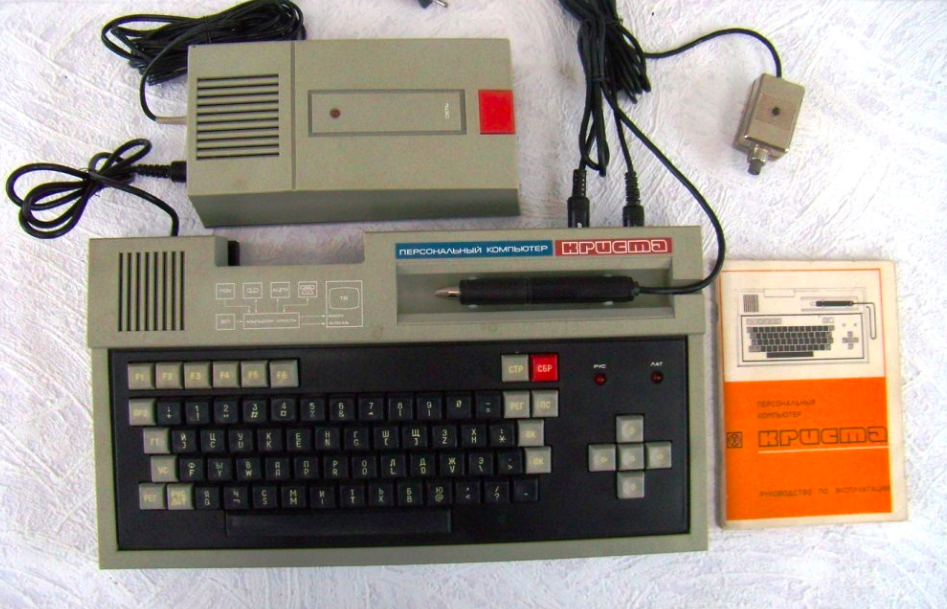
The Soviet personal computer worked on the Soviet analog of the Intel 8080 processor and was very much like the Mikroshu. The display was an ordinary household TV, and a cassette tape recorder was used to store, record and play programs. Krista is the first Soviet personal machine equipped with a light pen. The light pen was essentially a light-sensitive pen, with which it was possible to touch objects on the screen, such a domestic touchscreen. This tool allows you to quickly select objects on the display, was used to draw on it. Talking about the usefulness of such a manipulator is not worth it, because working at the big screen of the TV, drawing something, was extremely uncomfortable for the eyes.
Information from advertising on PC Krista:
CHRIST instills computer skills. Teaches programming techniques. Solves problems of a number and research nature. Stores various filing cabinets. Serves as a reference book and dictionary. It has a light pen. Teaches music notation. Memorizes and reproduces excerpts from musical works. Organizes electronic games. Accelerates the exchange of radiograms in the amateur radio. It has high noise immunity.
From the memories of Krista: “my first computer with it was a music sequencer as a music demo was a Polonaise Oginsky, it was just as good as a synthesizer, and the programs from mikroshysh suited”, “and the program for the light pen is a screen filled with dots like this ... ... (pseudographic). When presenting a pen, points were replaced with asterisks. It was impossible to persist. There were a lot of games. Approached almost everything from Radio 86rk and others. There was also an assembler interpreter, but I could not comprehend it and it seems impossible at all)) ”.
Apogee - the most advanced anolog of Radio-86RK
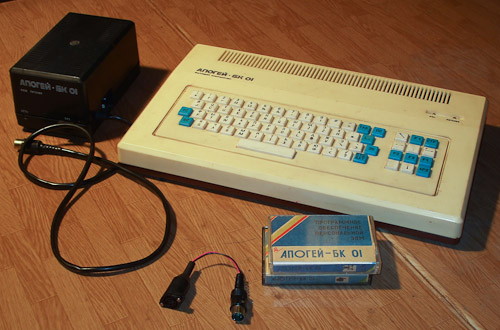
Personal electronic computer "Apogey BK-01". The release of this Soviet 8-bit PC started in the distant 1988, at the plant BRA in the Tula region (was engaged in the release of household radio equipment): 64 Kbytes of RAM, 4 Kbytes of ROM. There was a regular three-channel sound generator on the KR580VI53 microcircuit (for audio output). For storing, recording and playback of programs other than a cassette recorder, loading from an external ROM up to 64 Kbytes was provided, though only reading. Apogee BK01 provided software support for two recording and reading modes.
Apogee BK-01Ts is the “color” version of PC. Here the KR580VG75 chip was used, which helped to realize a color image: 8 colors for symbols on a black background, or 8 colors of a background with black symbols. However, the PC Apogee displayed quite complex and beautiful pictures.
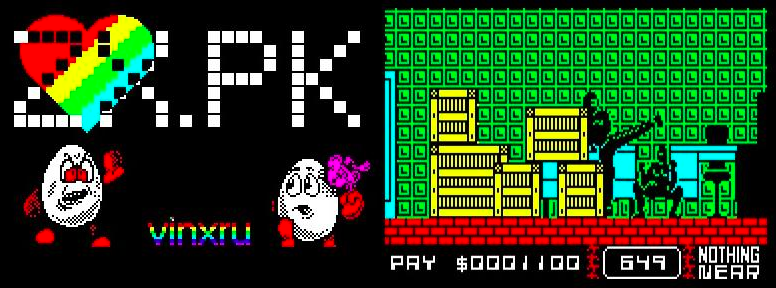
The cost of a computer ranged from 440 to 560 rubles.
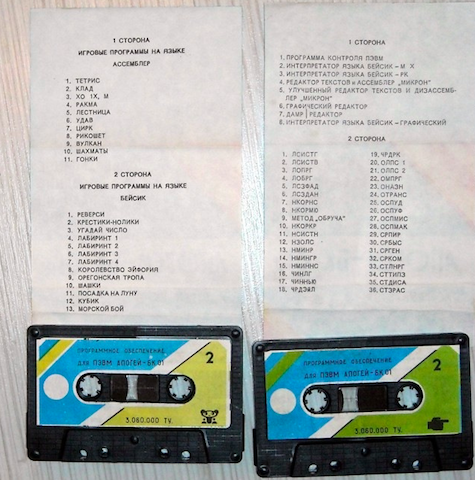
PK-01 Lviv
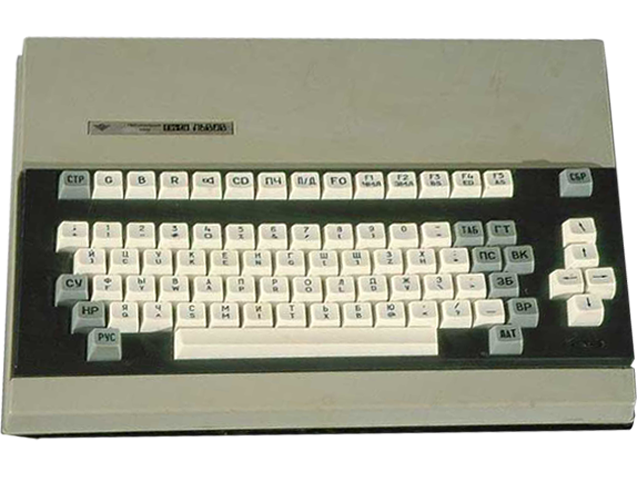
In 1986, the Lviv Polytechnic Institute developed a personal 8-bit educational household computer "Lviv". The car was released Lviv production association to them. Lenin. The PC was based on the KR580VM80A processor, and the graphics capabilities were improved. The RAM was 64 KB, 16 KB was allocated for video memory. The sound generator in Lviv was absent, the sound was output programmatically with a full processor load.
The characteristics of the Lviv PC: frequency 2.22 MHz, speed was 200-300 thousand operations per second, RAM - 64 Kbytes (16 Kbyte of video memory), ROM - 16 Kbytes, power consumption was no more than 30 watts.
The tape recorder was an external memory, and the usual TV served as a monitor. On the screen 4 of 8 colors of the palette could be displayed simultaneously. It was possible to connect a NVMD controller, a ROBOTRON printer to the Lviv PC. The cost of such a machine was 750 rubles. The cost was higher due to the presence of color graphics and a relatively large amount of memory. The model was popular, especially in Ukraine, 80 thousand such devices were released. Because it is not strange that by the number of games and programs released this PC takes the 3rd or 4th place among Soviet personal computers. Perhaps his popularity was nothing more than another marketing ploy, because this car was actively advertised on TV in the late 80s.
The most accurate choice in the sea of information for you is PK-01 Lviv :
Thank you for staying with us. Do you like our articles? Want to see more interesting materials? Support us by placing an order or recommending to friends, 30% discount for Habr's users on a unique analogue of the entry-level servers that we invented for you: The whole truth about VPS (KVM) E5-2650 v4 (6 Cores) 10GB DDR4 240GB SSD 1Gbps from $ 20 or how to share the server? (Options are available with RAID1 and RAID10, up to 24 cores and up to 40GB DDR4).
VPS (KVM) E5-2650 v4 (6 Cores) 10GB DDR4 240GB SSD 1Gbps until December for free if you pay for a period of six months, you can order here .
Dell R730xd 2 times cheaper? Only we have 2 x Intel Dodeca-Core Xeon E5-2650v4 128GB DDR4 6x480GB SSD 1Gbps 100 TV from $ 249in the Netherlands and the USA! Read about How to build an infrastructure building. class c using servers Dell R730xd E5-2650 v4 worth 9000 euros for a penny?
